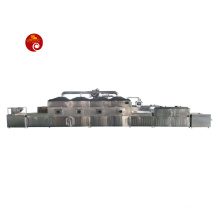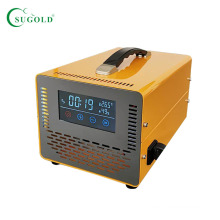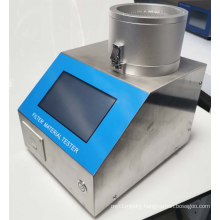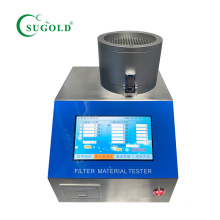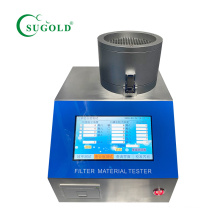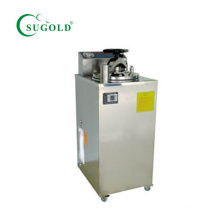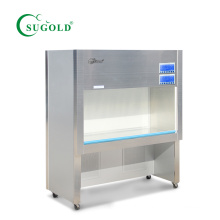Application and Improvement of Tongshankou Copper Mine Filling Mining Technology
2021-04-25
0 Preface
After more than 30 years of large-scale mining, the Tongshankou copper mine was converted from open pit mining to open pit and underground mining in January 2014. In order to ensure the safety of open mining and underground mining at the same time, reduce the pollution and damage of the surface of the beneficiation tailings to the surface environment, the Tongshankou copper mine should be applied by sub-stage empty field 充 post filling method or upward horizontal stratified point column filling method. Fill the mined area after mining.
1 Introduction to Tongshankou Copper Mine Filling Station
The Tongshankou copper mine filling station consists of two parts: a filling and mixing station and a filling and returning station. The filling and mixing station consists of vertical sand silo, cement silo, double impeller stirring tank and HGBS120 piston industrial pump. After the tailings of the ore dressing are classified, the coarse-grained grade (≥37μm) tailings enters the tailings concentrated storage device at the top of the vertical silo, and after natural sedimentation enters the bottom of the silo, the high-pressure gas and high-pressure water are deposited on the silo. The tailings are pulped and transported to a stirred tank. At the same time, according to the lime sand ratio and slurry concentration set by the control system, cement and production water are input into the stirred tank from the cement silo. The evenly stirred mortar enters the piston industrial pump, and after being pressurized, passes through the filling pipeline to enter the gob to be filled.
The filling and returning water station is composed of a production return pool, a low-pressure production pool and a high-pressure production pool. The water in the production backwater pool comes from the overflow water from the top of the vertical silo and is discharged to the tailings thick pool. The water in the low-pressure production pool and the high-pressure production pool comes from the Tongshankou copper mine swimming pool. The water in the low-pressure production tank has two directions, one is to enter the agitation tank to adjust the mortar concentration, and the other is to enter the water tank for filling and filling the pipeline before and after filling. The water in the high pressure production pool enters the vertical silo for pulping.
The Tongshankou Copper Mine Filling Station consists of two systems, one for each.
The parameters of a single system are as follows: the filling capacity of the filling slurry is 80-120 m3/h, the filling slurry concentration is 65%-75%, and the lime-sand ratio is (1:4)-(1:12) (according to the mining method used) And the maximum filling amount is 1500m3, and the continuous stable running time is 6~12h.
Compared with some mines in China, two sets of pressurized pumping systems have been added to the Tongshankou copper mine filling system. Because the middle section of the Tongshankou mine is currently in the middle section of -160m, the filling pipeline is placed at the level of -100m, and the filling line is 4-8. According to the empirical value, when the filling doubled line is greater than 4, it is necessary to pressurize the pumping to deliver the filling slurry to the gob. When the middle section of the underground mining reaches the level of -220, -280m, and the mining of the smaller filling line is completed, the filling slurry can be filled without the need of the plunger pump to fill the gob. Further deep mining, the filling slurry can be transported to all goafs by its own gravity.
2 Tongshankou Copper Mine Filling Mining Background and Application
2.1 Ore body conditions
The No. I ore body is a "cylinder" ore body controlled by rock strains, and has a "ring" of 500-600 m in diameter on the plane, and is partially S-shaped.
The ore body has a length of 2100m and a tendency to extend 300-500m; the thickness is 10~30m, and the thickest is 60m. The east, north and west sides of the No. II ore body are connected to the No. I ore body. The plane is like an asymmetrical “topped” brim, extending horizontally from 100 to 300 m; the section extends to the elevation of -100 to -200 m, and the dip angles are Different, the northern section is almost horizontal, the southern section is steeper; the thickness is generally 5 to 10 m, with an average of 8 m. Ⅵ ore body as an insidious marble, skarn, breccia rock, ore depth -190 ~ -250m, bedded, gentle occurrence, into nearly anything, to the northwest tilt angle 8 ° ~ 22 °, connected to the No. I ore body at the north and south ends of the 22 line, characterized by a thick ore body with a stone layer in the middle.
2.2 Mining methods
The No. I ore body and most of the No. II ore body are steeply inclined and medium-thick ore bodies, and the ore is stable. The segmented empty field 嗣 post filling method is used, as shown in Figure 1. When the thickness of the ore body is less than 15m, the ore blocks are arranged along the strike. When the thickness of the ore body is greater than 15m, the ore blocks are arranged vertically.

The No. VI ore body is a gently inclined thick ore body with a stone layer in the middle, and the upper layered point column type filling mining method is used, as shown in Fig. 2.

According to the preliminary design requirements, for the segmented empty field after the filling method (arrangement along the strike), the plastic filling pipe is installed horizontally in the upper stage of the filling unit, and the corrugated water filter is placed from top to bottom.
After the underground filling is ready, the filling begins. The tailings cement slurry is discharged from the surface filling station, and the filling hole is injected into the underground goaf for full-stage filling. The excess water from the water filter and the water filter layer of the closed wall And around the empty area and the bottom of the crack seepage. In order to facilitate the ground pressure management and bottom column recovery during the recovery of the whole ore block, the bottom (about 4m) and the top (about 1m) of the goaf are filled with tailings with a ratio of 1:4 to 8 grit. The middle portion (about 37 m) is filled with tailings binder with a sand-to-sand ratio of 1: (8-12).
For the upper horizontal stratified point column filling method stope, after the first stratified mining end of each middle section, the artificial false bottom is cast, and the artificial bottom column height is 3m, wherein the reinforced concrete layer thickness is 0.4m, the lime sand ratio The 1:5 cemented backing body has a thickness of 2.6 m. The other layered filling is divided into lower non-cement filling and upper casting cement filling, layering filling height is 3m, upper pouring surface cementing filling height is 0.4m, sand-sand ratio (1:8)~(1:10), filling The pulp concentration is 70%. The lower non-cemented filling height is 2.6m, and as much as possible, the excavated waste rock is used for layering the lower non-cemented filling to reduce the amount of waste rock that is lifted out of the ground. Before the stratified filling, it is necessary to install a sluice draining well, and install a retaining wall in the stratified contact road to close the filling stratification. The filling pipe fills the returning downhole through the stope to fill the stratification.
3 Improvement of filling technology of Tongshankou copper mine
3.1 Improvement of cementitious materials
Cementing as cementing material has the following disadvantages: it requires the filling aggregate size (for the physical properties of Tongshankou copper mine tailings, the requirement is ≥37μm); the filling body has a large amount of bleeding; the setting time is long; the early strength Low; large amount of cement and high cost. These shortcomings lead to the completion of underground filling not only seriously affecting the stability of the goaf, destroying the underground working environment, but also greatly increasing the mining cost. For the up-horizontal stratified point-column filling method, after a stratified recovery filling is completed, the scraper cannot quickly enter the stope for the previous stratified recovery.
In view of the above shortcomings of using cement as a cementitious material, the Tongshankou copper mine was tested with a new gelling agent. The test pieces made of the two kinds of cemented materials were respectively tested for strength. It can be seen from Table 1 that the strength TK6 of the two test pieces 3d is greater than that of SN6 under the condition of 1:6 lime sand ratio and 64.3% slurry concentration, and the intensity TK6 of 28d is much larger than SN6. It can be seen from the test that the use of the new gelling agent enhances the strength of the filling body to a certain extent, and the early strength is also improved. For the upper horizontal stratified point column filling method, the operation cycle time between the stratifications can be greatly shortened, and the mining capacity of the stope can be improved. For the test block TK10 with a lime-sand ratio of 1:10, the strength of the 3d and 28d test blocks is also greater than the test block SN6 with a 1:34 sand ratio, which means that the filling effect of the same strength is obtained, and the new gelling agent is obtained. The usage is much less than the amount of cement used, which saves the cost of filling.

3.2 Improvement of filling retaining wall
At present, the filling method of the filling retaining wall of the 517 stope in the north of the mine is: three or two rows of Φ36mm×1800mm steel anchors are placed on the top of the roadway at the top of the wall, and the anchor is exposed 1000mm. Manually clear the bottom to the hard bottom, pour a 100mm thick mortar floor, and lay a sack on the floor to ensure the flatness of the bottom of the closed retaining wall and avoid leakage, using 390mm × 190mm × 190mm MU10.0 hollow block and M10. 0 cement mortar masonry, the retaining wall of the retaining wall and the contour of the mining road is blocked with sacks, and the mortar is filled in the gap to ensure the compactness. The thickness of the retaining wall of the mine entrance and the crossing is 1000mm. During the masonry, the ethylene pipe was buried at 0.5, 1.0, 2.0, and 3.0 m of each retaining wall as a temporary dewatering pipe and observation tube, as shown in Fig. 3.

Drawing on the experience of other mines in China, we tried to apply a movable filling retaining wall in the Tongshankou Copper Mine. The filling retaining wall is mainly composed of a steel skeleton, a wooden block and a filter cloth. In the roadway, there are two gangs and one roof. The steel frame is fixed by bolts. The wooden blocks are arranged at the front end of the steel frame, and the water gap is left between the wooden blocks, and then the filtering is arranged at the front end of the wooden block. When the goaf is filled, the retaining wall can be disassembled and moved to other areas to be filled for reuse, which can greatly save the cost of manually making the filling retaining wall.
4 Conclusion
In general, the application of the filling mining method in the Tongshankou copper mine is still in the exploration stage. Although some achievements have been made in the improvement of the new gelling agent, the following problems still exist and can be optimized in the future.
(1) Further testing and optimizing the theoretical characteristics of the new gelling agent, so that the early strength of the filling material is greater, and finally, in the upward horizontal layering point column filling method, the shovel can be filled within 24 hours after the stratified filling is completed. Physically carry out the previous layer of mining operations.
(2) Although the movable retaining wall has been successfully used in some mines, whether the application of the Tongshankou copper mine can achieve the expected results remains to be further practiced.
(3) As the mining level continues to decrease, the filling line is getting smaller and smaller. In some sections of the -220m middle section, it is possible to try to pump the filling slurry without pressure. It is theoretically feasible, but it still needs to be tested.
references:
[1] Editorial Board of Mining Design Handbook. Mining Design Manual (mineral mining volume (on) / (below)) [M]. Beijing: China Building Industry Press, 1988.
[2] Liu Qingshun. Modern Mining Engineering Design Manual [M]. Beijing: China Coal Industry Publishing House, 2006.
[3] Li Tianming. Ten key technologies for mine mining [M]. Beijing: Beijing University of Mining and Technology Press, 2007.
[4] Editorial Board of Mining Manual. Mining Manual [M]. Beijing: Metallurgy Industry Press, 1990.
Source: Mining Technology: 2016, 16(4);
Copyright:
This product is adopt chip-mounted cement silo is specially designed and developed for the difficulty of packing and the high transportation cost. The top of the warehouse is equipped with a pressure relief valve to balance the pressure inside the chamber. Prevent explosions. Each cement silo is provided with an upper and lower material level indicator, which can display the empty state of the silo.
Silo Storage, Bolted Cement Silo, 500Tons Bolted Cement Storage Silo, 200Tons Bolted Bulk Cment Silo
Bolted Silo,Grain Dryer Co., Ltd. http://www.sdmobileconcretebatchingplant.com
